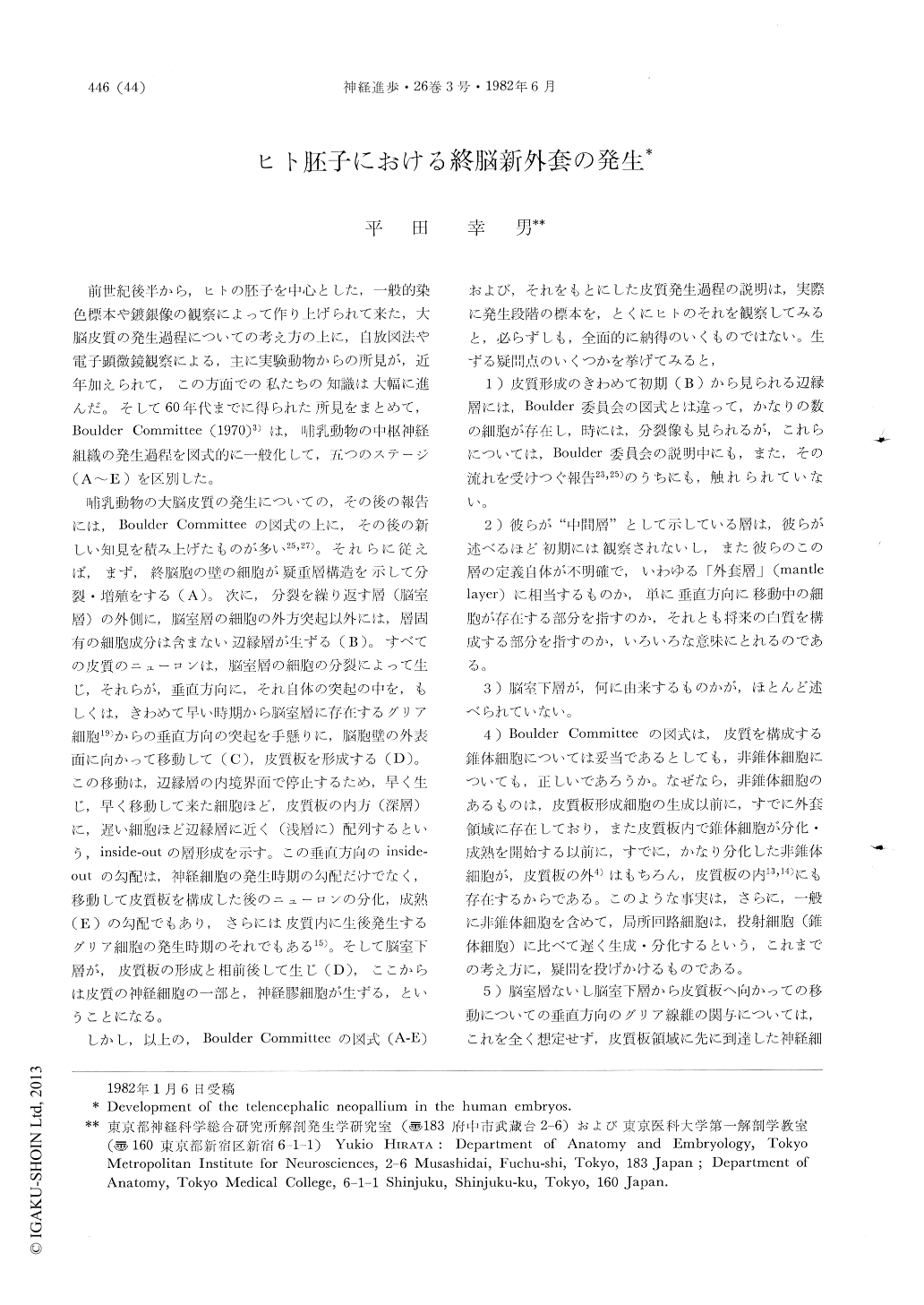Japanese
English
- 有料閲覧
- Abstract 文献概要
- 1ページ目 Look Inside
前世紀後半から,ヒトの胚子を中心とした,一般的染色標本や鍍銀像の観察によって作り上げられて来た,大脳皮質の発生過程についての考え方の上に,自放図法や電子顕微鏡観察による,主に実験動物からの所見が,近年加えられて,この方面での私たちの知識は大幅に進んだ。そして60年代までに得られた所見をまとめて,Boulder Committee(1970)3)は,哺乳動物の中枢神経組織の発生過程を図式的に一般化して,五つのステージ(A〜E)を区別した。
哺乳動物の大脳皮質の発生についての,その後の報告には,Boulder Committeeの図式の上に,その後の新しい知見を積み上げたものが多い25,27)。それらに従えば,まず,終脳胞の壁の細胞が疑重層構造を示して分裂・増殖をする(A)。次に,分裂を繰り返す層(脳室層)の外側に,脳室層の細胞の外方突起以外には,層固有の細胞成分は含まない辺縁層が生ずる(B)。すべての皮質のニューロンは,脳室層の細胞の分裂によって生じ,それらが,垂直方向に,それ自体の突起の中を,もしくは,きわめて早い時期から脳室層に存在するグリア細胞19)からの垂直方向の突起を手懸りに,脳胞壁の外表面に向かって移動して(C),皮質板を形成する(D)。
Abstract
The neopallial area at the late embryonic stage (St. 22) shows marked latero-medial tan-gential gradients in its lamination pattern. Most medial part adjoining to the archipallium is bilaminated, i.e., ventricular and marginal zones (Type I.) Marginal zone contains considerable number of various types of cells, mostly having horizontal axes. From the lateral margin of the type I pallium begins the addition of a new layer, the subventricular zone, between the aforementioned two laminae composing type I pallium.

Copyright © 1982, Igaku-Shoin Ltd. All rights reserved.


